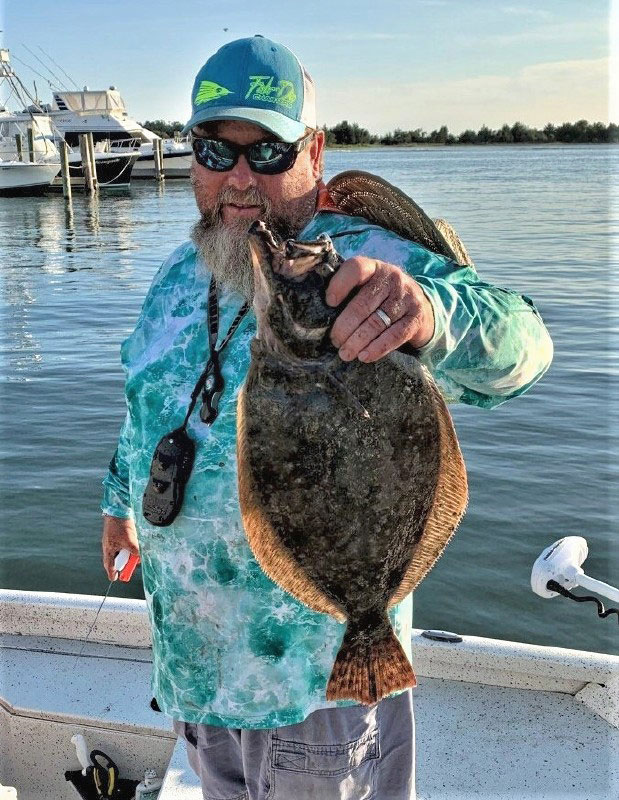
North Carolina’s long-anticipated but short recreational flounder fishing opens Sept. 1 and ends 14 days later.
Guides such as Dale Collins of Swansboro’s Fish or Die Charters expect a wave of anglers to pound inshore and offshore waters and add these popular, tasty saltwater fish to their skillets and freezers.
“I think a lot of people will go every day of the season or as much as they can,” said Collins, 52. “I also expect a lot of them will gig flounders.”
Recreational anglers and giggers legally may keep four flounder of at least 15 inches per trip.
During the run-up to the season, Collins (252-422-4326) said many anglers who targeted red drum and spotted seatrout caught “lots” of flounder, just like the preview to last year’s season.
“Flounder hit the same kind of baits you use for red drum and hang out at the same places,” he said. “Redfish and flounder love 4- to 5-inch finger mullet, but they’ll hit pinfish, croakers and mud minnows. They’ll eat anything struggling on a hook.”
Many guides and tackle-shop owners said that 2020’s short flounder season likely produced better results than previous longer seasons because of increased fishing pressure and stockpiled fish.
“I got a lot of calls this spring and summer asking about how to gig flounder. I’ve got a feeling during the 15 days of this coming season, I’ll probably run 25 total charters,” Collins said, mixing daytime between hook-and-line trips and night-time gigging trips.
Giggers use lights to illuminate flounder on the bottom in shallow water and impale them with steel rods or small tridents. Giggers also target bigger flounder, usually spawning females.
“Flounder sometimes only need as much water as will cover their backs,” Collins said.
When he’s fishing around Swansboro, Collins targets docks, boat ramps and anywhere there’s a drop-off, including ledges, creek mouths with oyster points and other types of oyster rocks because they hold baitfish.
“In the marshes at high tide, we beat the banks against the grass,” Collins said. “At low tide, flounders pull off and get in deeper holes.”
Collins prefers Star Segis rods and Penn Conflict 2500 or 3000 series reels spooled with 4- to 15-pound moss-green Power Pro braid and 30-pound Yozuri fluorocarbon leaders.
“I like gold Kahle hooks that match the sizes of the baitfish I use,” he said.
The N.C. Marine Fisheries Commission’s latest attempt to reduce overfishing of southern flounder follows 2020’s reduced flounder season when hoped-for 72%-percent target reduction of flounder taken missed by several country miles.




Be the first to comment